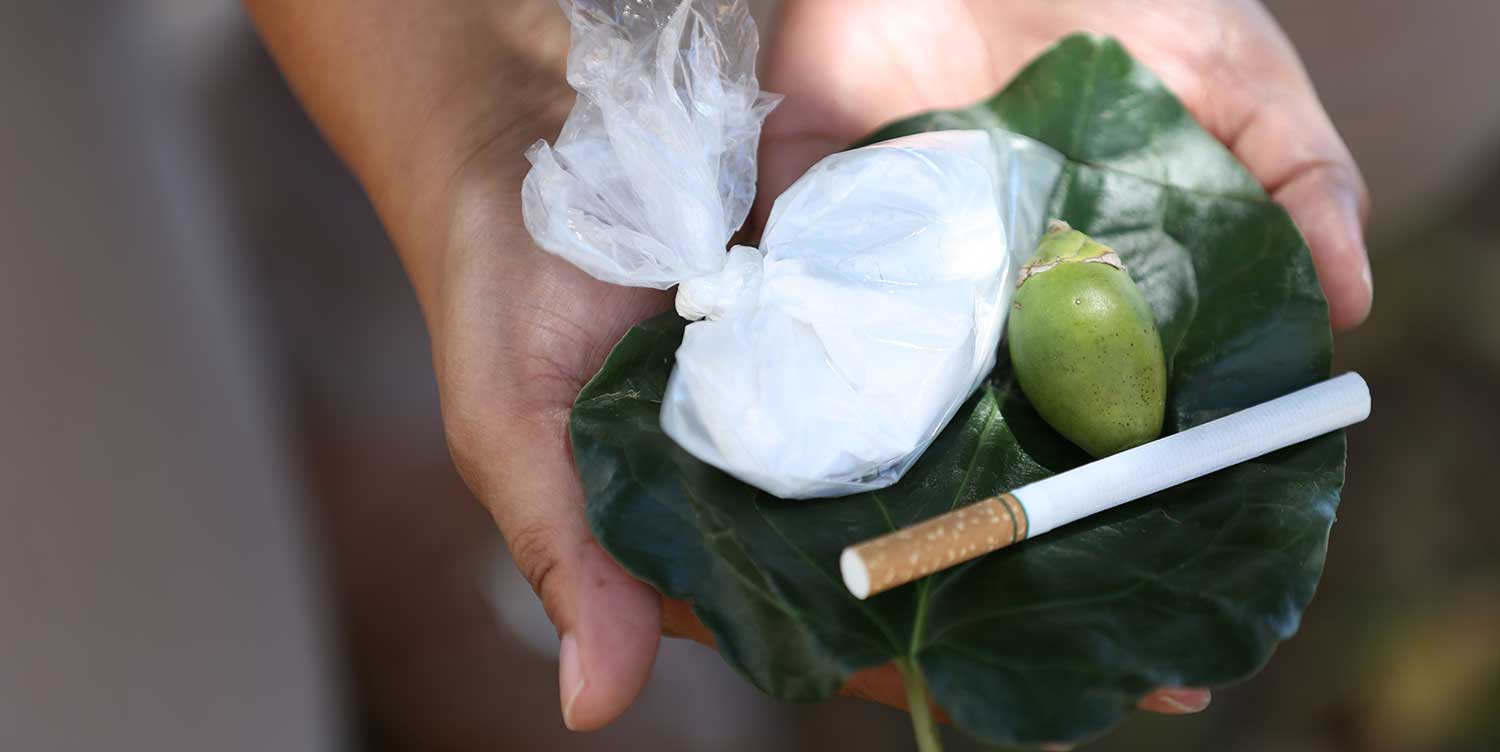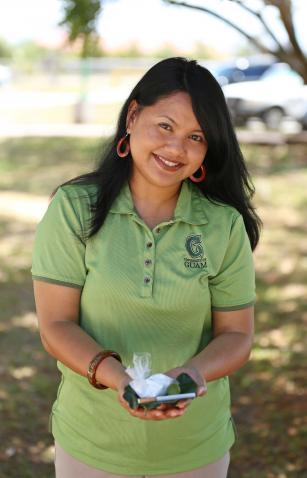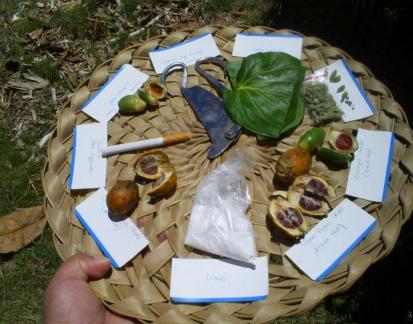Research Spotlight
UOG Researchers Work to Understand the Impact of Areca Nut Chewing
Research Spotlight
2/7/2018
UOG Researchers Work to Understand the Impact of Areca Nut Chewing
 Shown above is the betel quid--the nut packaged with added ingredients.
Shown above is the betel quid--the nut packaged with added ingredients.
Culturally, the chewing of areca nut—or betel nut—can be traced throughout history
and is widespread not only throughout the Micronesian region but globally in parts
of Asia, Africa, Europe and the United States.
But research detailing the impact the various methods of chewing areca nut has on
the human body is less established than the practice itself—leaving little information
available to help doctors, researchers, and even the public understand the effects. Leon Guerrero
Leon Guerrero
Dr. Rachael Leon Guerrero, a Principal Investigator for the University of Guam’s
recently renewed U54 cancer research grant, said two of the three research projects
in the grant focus on understanding not only the effects chewing the areca nut but
the behavioral aspect as well—answering questions such as what are some of the factors
that lead people to chew the areca nut, and what will it take to get them to stop?
“We’re serving both a local and global need,” Leon Guerrero said. “Because betel
nut and the oral cancer rate is higher here than it is in the U.S. Mainland—it’s an
issue very unique to the region, but it’s also worldwide.”
Grant Renewal
Since 2003, the University of Guam and the University of Hawaii Cancer Center (UHCC)
have been working in collaboration to advance health equity in Pacific Islanders through
cancer research, education and outreach.
Last fall, the UOG was awarded a $4.3 million grant to support its ongoing partnership
with the UHCC which addresses cancer health disparities among Pacific Islanders in
Guam, Hawaii, and neighboring U.S. Associated Pacific Islands.
Over the years, the National Cancer Institute has invested nearly $27M ($15M UOG,
$12M UHCC) in support of this partnership, funding that will continue through August
2020.
 Paulino holds the ingredients of the betel quid. Current Project
Paulino holds the ingredients of the betel quid. Current Project
UOG Associate Professor of Health Sciences Dr. Yvette Paulino—who has spent nearly
10 years researching cancer risk factors with funding through the cancer grant—said
multiple projects analyzing the biomarkers, chemistry, social and cultural factors,
oral potentially malignant disorders (OPMD), and more have lead up to the current
project: an intervention study with a trial cessation intervention.
Broken up into two distinctions—class one or what appears to be low risk and class two or what appears to be high risk—those who chew betel nut are defined by how they
prefer their product—either just the nut or packaged with other ingredients, which
is referred to as the betel quid.
“Based on our analysis, we were able to identify the high-risk group as those who
chew the young betel nut and add other ingredients to it, particularly tobacco,” Paulino
said. “I think the more you can educate people, I think they’ll start to listen, but
the only concrete thing I can stay about betel nut chewing is that it’s always evolving.”
Both Leon Guerrero and Paulino said there is little research that directly links
chewing just the areca nut and developing cancer.
“There is very little epidemiologic evidence that states the areca nut alone causes
cancer,” Paulino said. “At least in what we’re seeing, when you add tobacco it does
increase the risk for oral cancer,” which is why the class two chewers are the main
targets of the intervention study.
Collaboration is Key
Last month, Paulino attended the International Conference on Betel Quid and Areca
Nut held in Kuala Lumpur, Malaysia—a two-day gathering of stakeholders from around
the world looking to understand the cultural, medical and economic impact of chewing
areca nut and betel quid.
“Ten percent of the world’s population chews betel nut—about 600 million people,”
Paulino said. “In other countries, they are finding ways of commercializing it. In
2007, 12 percent of people on Guam were chewers.”
Collaborating with people and researchers from around the world helps propel the
research forward, she said, since there are so many aspects to understanding the impact. Shown above are the different elements to betel nut shewing including different types
of areca nuts, ingredients such as cardamom seeds and cigarettes, scissors, the betel
nut leaf, and lime used in chewing.
Shown above are the different elements to betel nut shewing including different types
of areca nuts, ingredients such as cardamom seeds and cigarettes, scissors, the betel
nut leaf, and lime used in chewing.
“When you start to involve investigators from the different disciplines, you come
up with a better approach—not just to the research but translating the information
into public health measures like programs or policies or education,” Paulino said.
“I appreciate that we’re working more and more collaboratively. You can’t do it by
yourself, and you have the expertise at the University to bring those people together.”
Next Step
The trial cessation intervention, which was modeled after a tobacco cessation program,
was recently approved by UOG’s Institutional Review Board (IRB) and is pending review
from University of Hawaii’s IRB. Depending on the results on the intervention, Paulino
said a fully developed cessation program could be the next step to helping people
who wish to quit chewing betel quid.
For more information, call the Guam Cancer Research Center at (671) 735-3036 or visit
online at www.guamcancerresearch.org.
